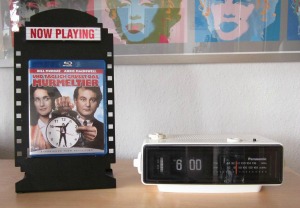 While the fascination with flip clocks may have had its beginning in North America, flip clock fans can now be found the world over.
While the fascination with flip clocks may have had its beginning in North America, flip clock fans can now be found the world over.The problem for collectors of these clocks outside of the United States and Canada is that many of these clocks will not work properly in their countries because of the differences in the electrical systems.
You see, while the United States uses an electrical system consisting of 110 to 120 volts running at 60 hertz, most of the world uses a higher voltage, 220 to 240 running at 50 hertz. Because of the nature of the motors in vintage flip clocks, simply decreasing the voltage will not work ... a clock designed to run at 60 hertz will run slow at 50 hertz.
The mistake many newcomers to flip clocks make, is that they intend to get a "cheap" electric transformer to power their clocks. Unfortunately, this is always a bad idea. Not only do most transformers or converters not even change the frequency of the current, the ones that do, often do not do it properly.
That's why FlipClockFans.com presents this instructional article on flip clock voltage and frequency and gives you our recommendation for the best company to supply your electrical transformation needs.
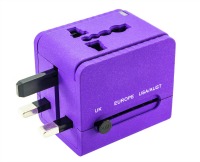 The first possible mistake a new flip clock owner can make is to simply get a plug adapter. Just getting an adapter does nothing to make a US clock work with a different electrical system. Yes, you'll be able to plug it in, then immediately, you'll smell the clock's internal transformer burning up. Oops!
The first possible mistake a new flip clock owner can make is to simply get a plug adapter. Just getting an adapter does nothing to make a US clock work with a different electrical system. Yes, you'll be able to plug it in, then immediately, you'll smell the clock's internal transformer burning up. Oops!The voltage first has to be stepped down from the higher voltage to around 110 to 120 volts. But what's this about frequency?
Household current is alternating current. That means the current changes direction, or polarity, rapidly. The rate of direction or polarity change is called the frequency. 60 hertz simply means 60 cycles per second. When alternating current changes direction it does so in a particular pattern. On a device that displays or graphs this change over time, an oscilloscope, the output is a smooth sine wave.
Vintage flip clocks are run by synchronous motors. A synchronous motor has a speed exactly proportional to the frequency. The flip clock is geared specifically to the motor, and the motor of clocks intended for use in North America requires a frequency of 60 hertz to result in the flipping of the clock tiles properly. If you run such a clock with 50 hertz you'll lose 12 minutes every hour.
So now we know we must get a device that changes both voltage and frequency. So why not just get a cheap one? There are some budget shaver transformers meant to do this for example.
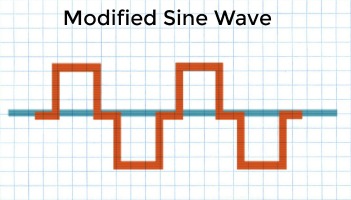
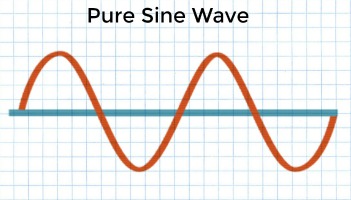
Getting an electronic device to output a smooth sine wave at 60 hertz is complicated, requiring special circuitry. In a cheaper device, the frequency is changed to 60 hertz, but the wave output is often a modified sine wave, which looks like a chopped up rectangular wave, not the smooth sine wave that the clock was designed to accept. The output from these budget devices only approximates a sine wave and it's not very smooth. Many electronic devices will not run smoothly and quietly with this waveform and, since the manufacturer was focused only on cost, they don't have the frequency accuracy needed, either. Thus the output will be less than a perfect sine wave, will not be a perfect 60 cycles per second, which will cause the clock to keep very poor time and be noisy as well. And noise isn't something you want on your night stand.
That's where Kens Clock Clinic comes to the rescue.
Ken has spent over two decades working with vintage electric and historical self-winding clocks and maintains an excellent website offering information and products for these type of clocks.
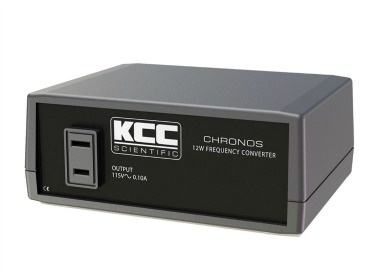 Of great interest to the flip clock fan however, are his Frequency-Precise Power Inverters. Specifically the Model 1930-115V (Chronos) Frequency Converter will take 220 to 240 volts at 50 hertz and output a very stable 115 volt alternating current at 60 hertz with a pure sine wave.
Of great interest to the flip clock fan however, are his Frequency-Precise Power Inverters. Specifically the Model 1930-115V (Chronos) Frequency Converter will take 220 to 240 volts at 50 hertz and output a very stable 115 volt alternating current at 60 hertz with a pure sine wave.The Model 1930-115V (Chronos) Frequency Converter is triple-protected against faults, making it safe in the home. The 1930 uses a precision Temperature Compensated Crystal Oscillator (TCXO) to assure the clock keeps absolutely perfect time, and a pure sine waveform to assure that it is quiet on your night stand.
While the device may seem costly, it is actually priced less than other inverters and produces a scientific grade output. It is certainly less costly than locating and buying another flip clock to replace the one damaged by other products. And, the Model 1930-115V (Chronos) Frequency Converter comes with everything you need including your country-specific plug adapter, saving you a lot of running around.
If you're going to invest in a vintage flip clock, you need to protect your investment with the proper electrical conversion system.
If you don't want your vintage clock to just sit on a shelf, and if you don't want it destroyed by plugging it into the wrong power or the wrong converter, go to kensclockclinic.com and choose the products link.
Go to the post about Ken's Clock Clinic to discuss or share your experiences.



I have bought a Japanese FlipClock (Seiko DP 668). I live in Denmark where we have 230v. To run it I use a Goobay Voltage Converter with a stated 110v output. On the back of the FlipClock it says that it requires 100v. The FlipClock makes a humming noise. Is it possible that the issue could be that I use a converter with an output of 110v instead of the 100v? Or could it maybe be if the converter is of bad quality? Or is it more likely that it is the internal transformer that is old and causing the humming sound?